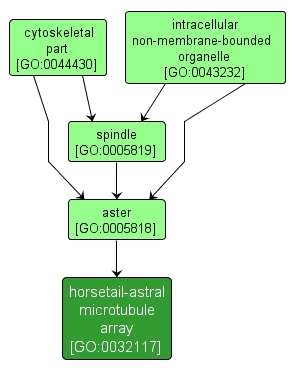GO TERM SUMMARY
|
| Name: |
horsetail-astral microtubule array |
| Acc: |
GO:0032117 |
| Aspect: |
Cellular Component |
| Desc: |
An array of astral microtubules that emanates from the spindle pole body during meiosis and facilitates horsetail nuclear movement. |
| Synonyms:
|
|

|
INTERACTIVE GO GRAPH
|














